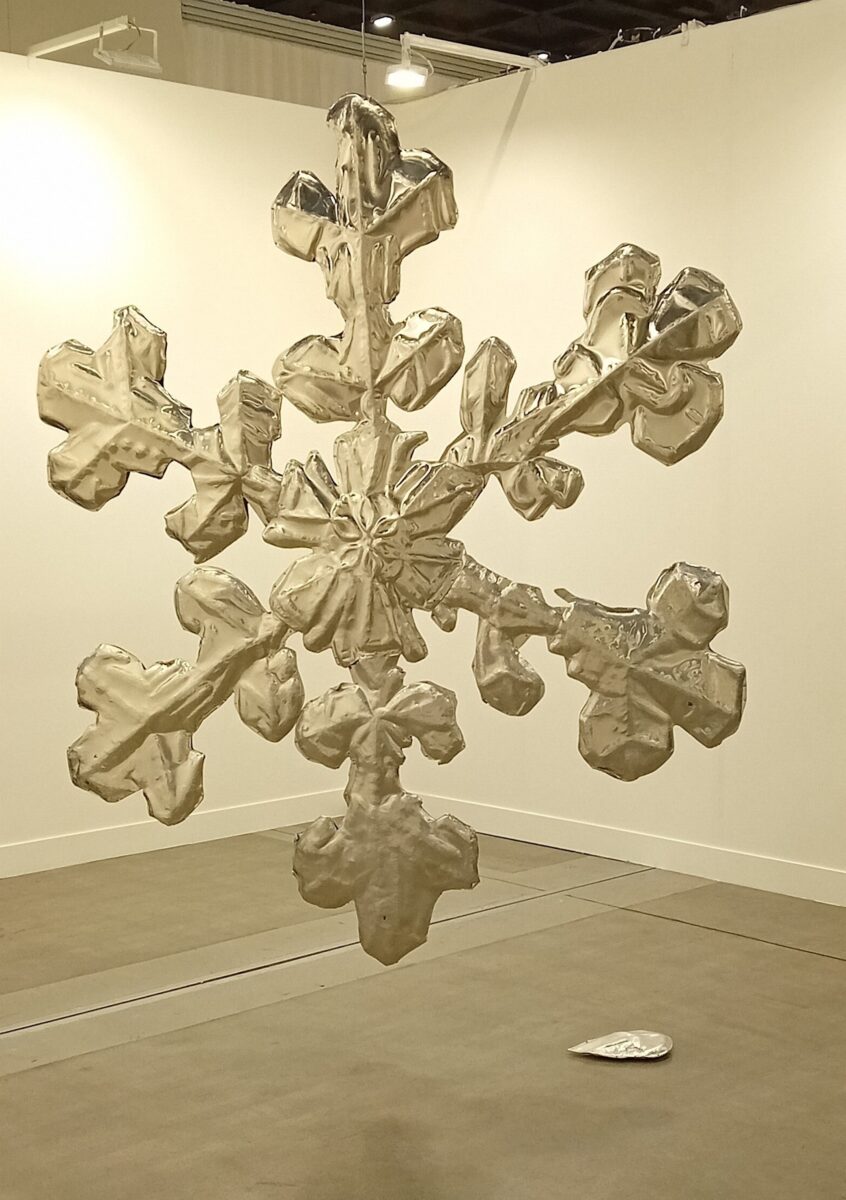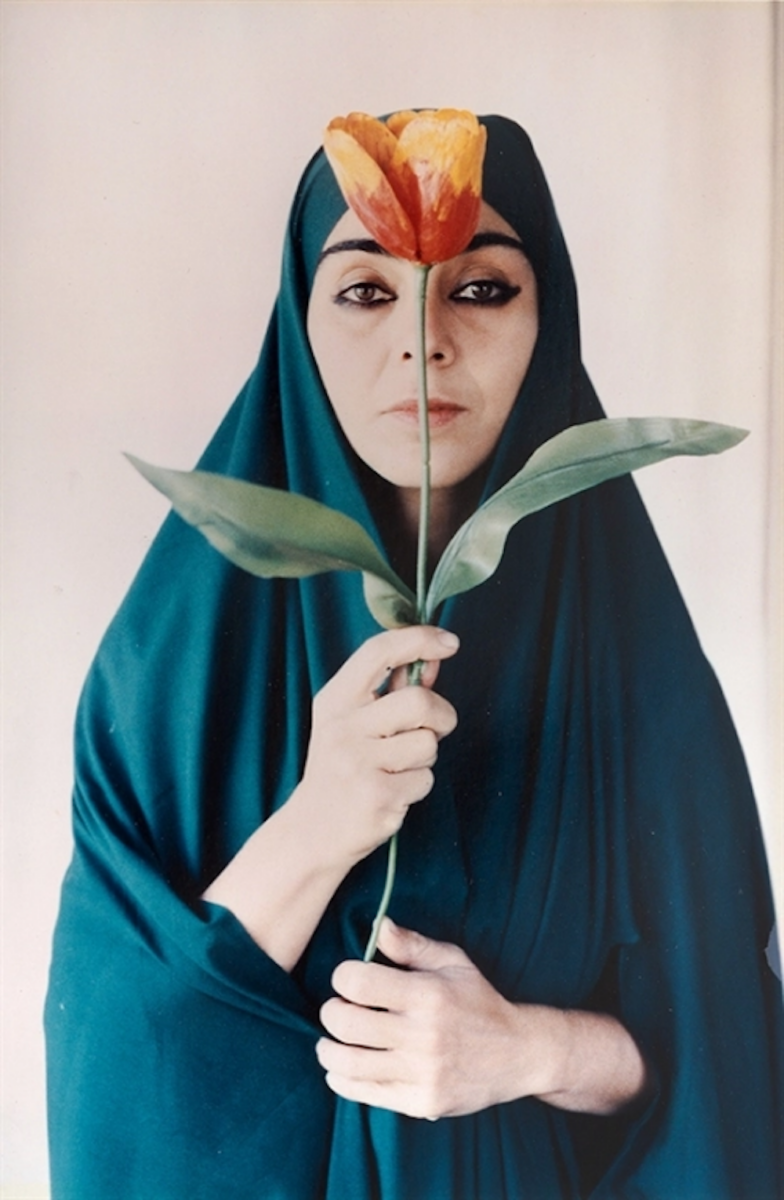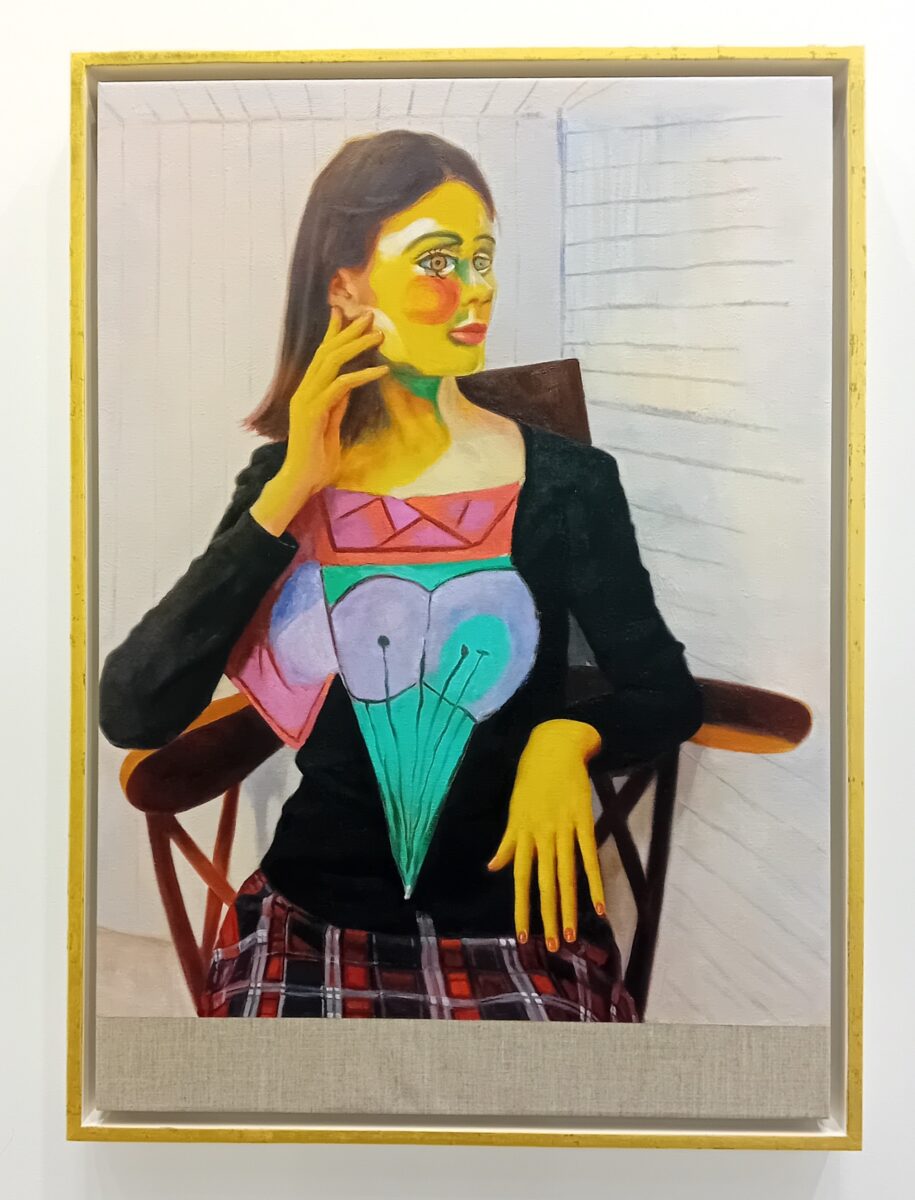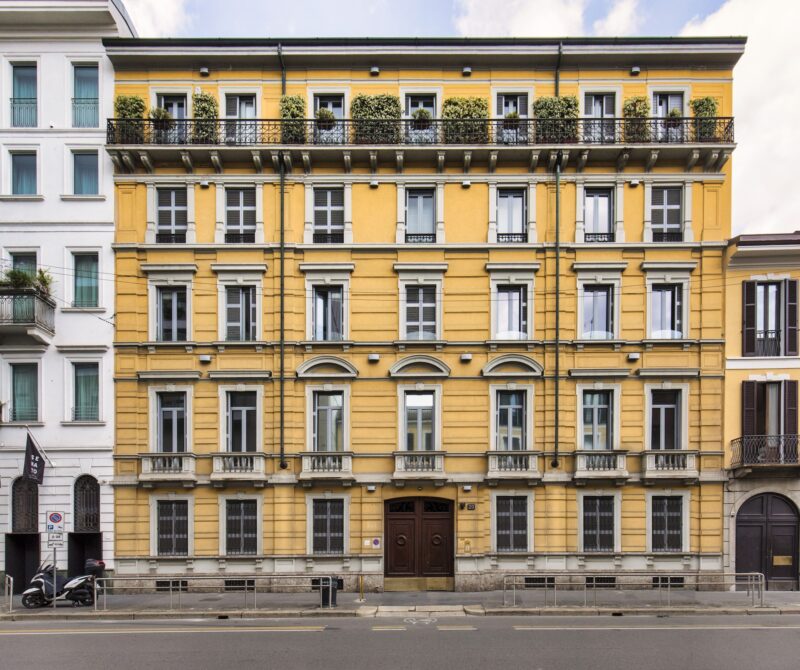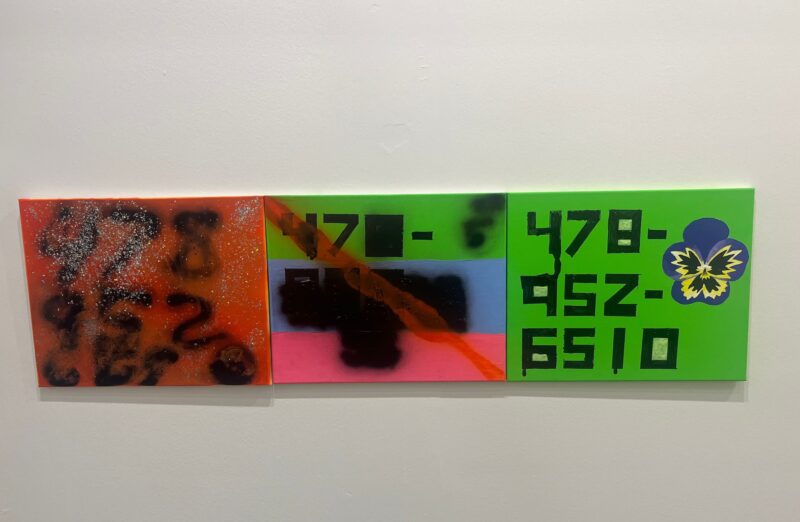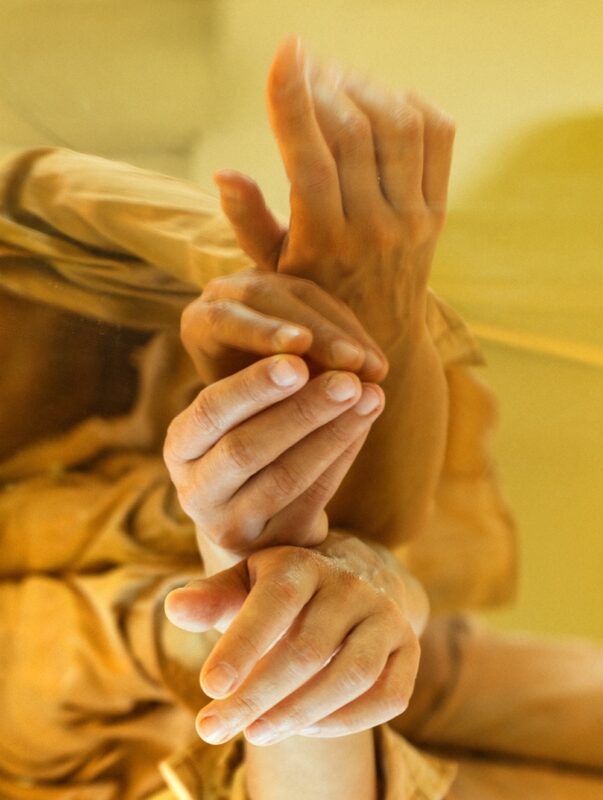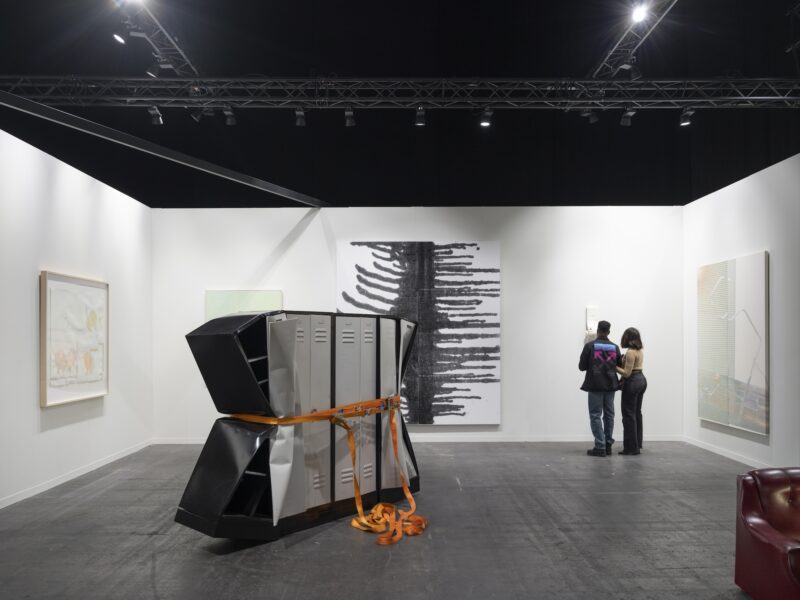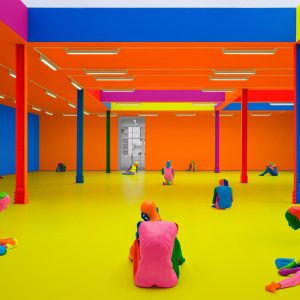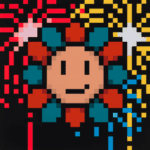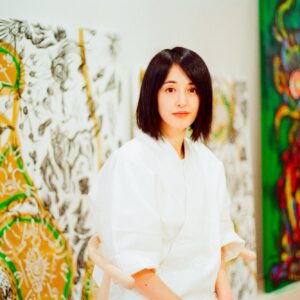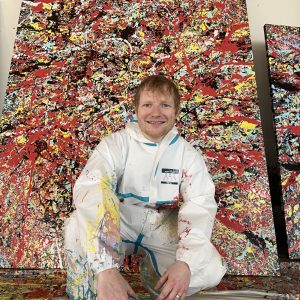Milan’s leading modern and contemporary art fair, miart*, takes place from 3th–6th April. The venue – a hall in the city’s huge conference centre – is modern and spacious, and the 179 galleries from 30-odd nations are of good overall quality. Plenty of themes could have been traced, including I suppose the officially stated one of being ‘among friends’, but here are ten fairly unconnected works that happened to interest me… There was a strong British cohort, with fifteen galleries having a presence in the UK, though I notice that my choices seem to concentrate largely on Italian artists and galleries, which does reflect the participant demographic. Let’s start with water…
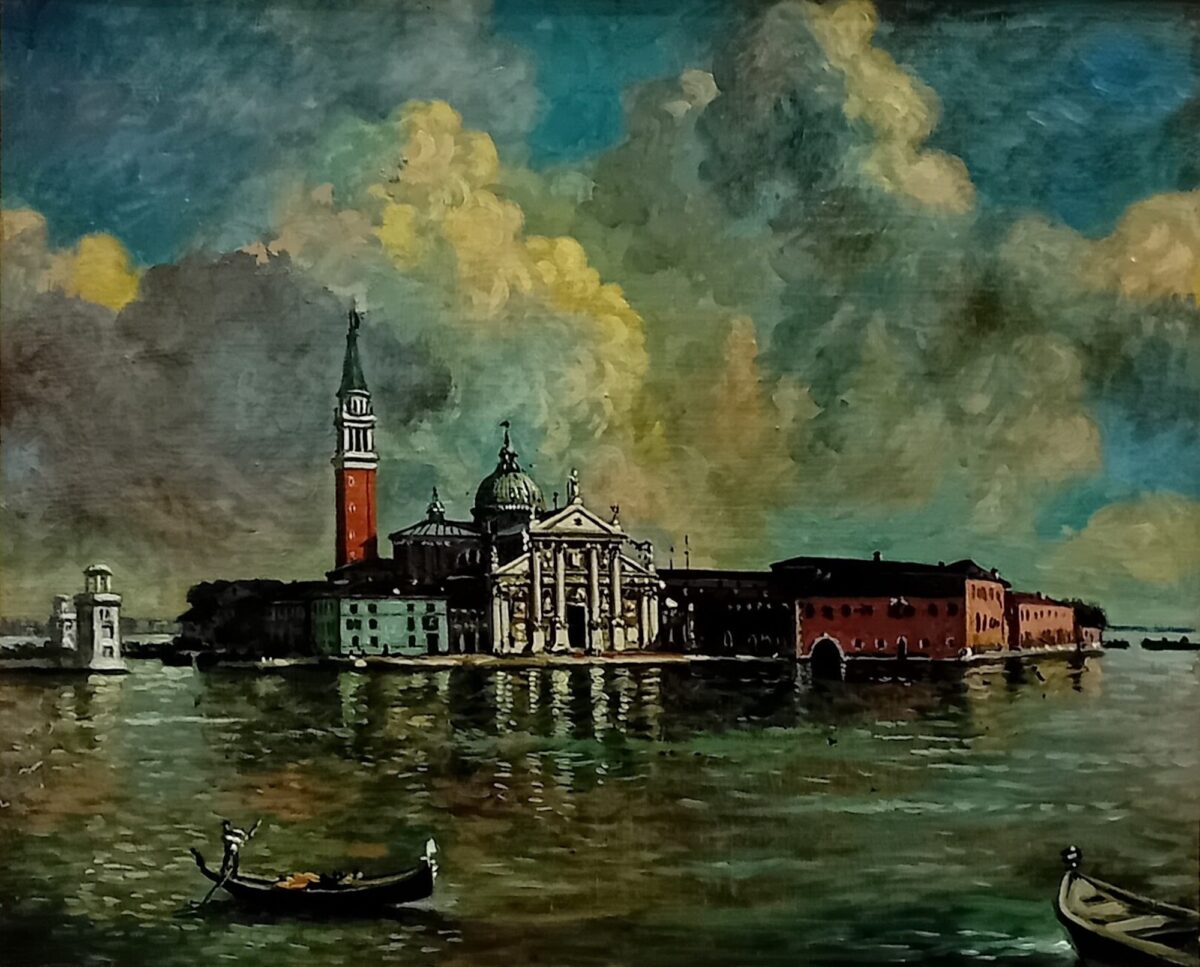
Giorgio de Chirico: ‘Venice, Island of San Giorgio’, late 1940’s at Galleria Frediano Farsetti, Milan
Late de Chirico is tricky. Did he fall into self-fakery, or was that post-modernism Avant la lettre? Either way, his relatively straight, somewhat baroque post-war views of Venice are potentially puzzling. Were they just income generators? Or do the Tintoretto-tinged, darkly mannerist colours, loose brushstrokes and sense of a temporal dimension, of Venice as out of time in the 20th century, make for an interesting update to the tradition of Canaletto, Bellotto and Guardi that evidently informs them?
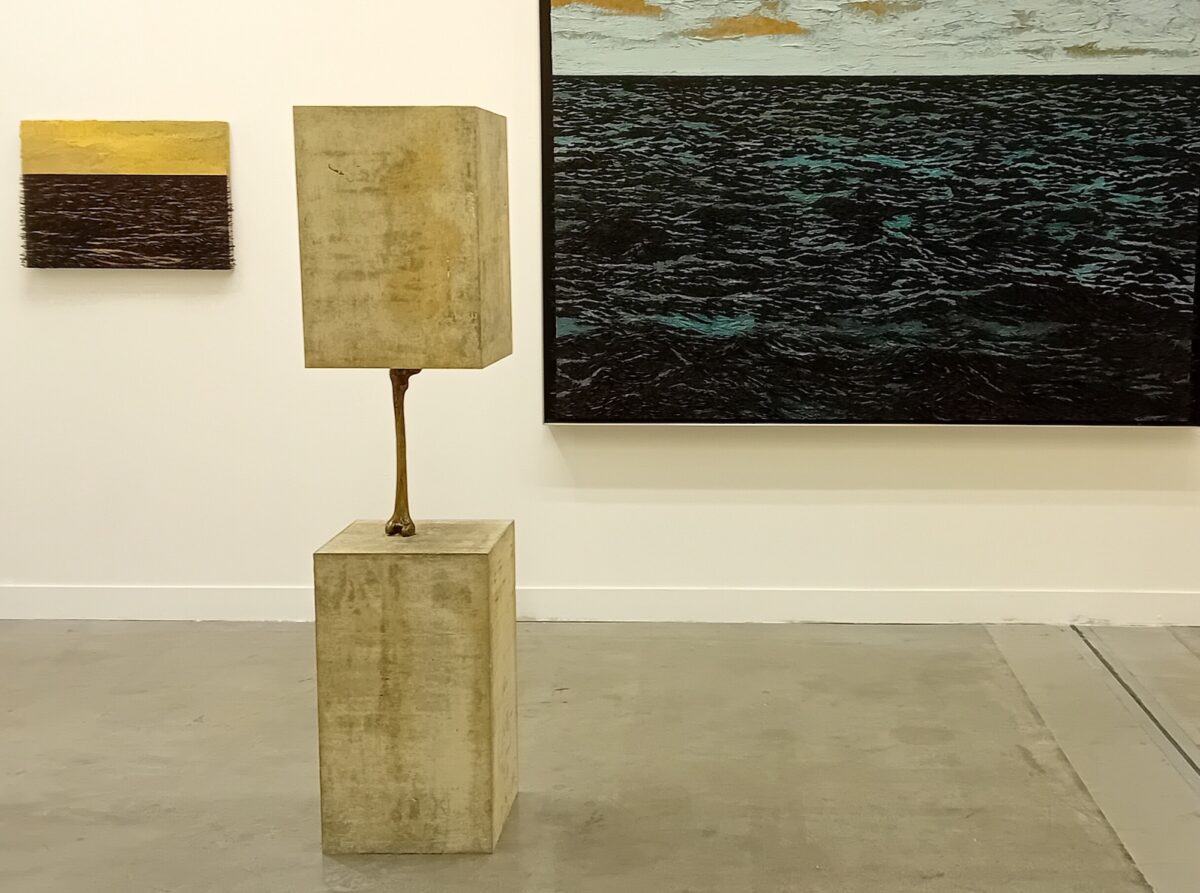
Yoan Capote: ‘Autorretrato (Estudio de Resistencia)’, 2019, at Ben Brown Fine Arts, London / Hong Kong / New York
The Cuban artist Yoan Capote is best known for his long-running series of seascapes incorporating fish hooks, of which he has said: ‘When a Cuban looks at the sea, it evokes the isolation and pain of thousands of families, the anxiety, and the psychological frustration of living in a divided country. The sea becomes a wall or a barbed-wire fence delimiting one’s destiny.’ Here, two examples were combined with the impossible-looking balance of a concrete block atop of a bone – albeit the bone is bronze – that make up a self-portrait as a ‘study of resistance’ to just such a heavy pressures of contested identity and political uncertainty.
Siyi Li: ‘Teardrop’ and ‘Teardrop (fearless on my breath)’, 2022, at CIBRIÁN, San Sebastián
The ‘Emerging’ section included the Spanish gallery’s presentation of Siyi Li’s riveted aluminium works suggesting a snowflake blown up hugely under a microscope to over 2 m high, and a tear that has fallen from it. That might suggest mourning for the loss of the poles’ compacted snow that is a key effect of global warming, but there is also a scientific connection. Snowflakes are famous for their unique crystalline structures, and the same can be said of teardrops. Moreover, the patterns of teardrop crystals are affected by what has triggered the tear – whether onions or differing emotions. It’s more complicated tah you might think, as there are three main types: basal tears, that keep our eyes lubricated; reflex tears in response to irritation; and emotional tears linked to a loss of control, whether through happiness or sadness. All of which could fit with the Frankfurt-based Chinese artist’s stated interest in ‘preserving ephemeral emotions as antidotes to shattered contemporary life’.

Massimo Vitali: ‘Rosignano Milk Penitente’, 2020 at Mazzoleni, London / Turin
Massimo Vitali took the first of his celebrated beach photographs – typically made from a tripod in the water – in 1995, explaining that he looked at the crowds driven by a great curiosity to discover why hordes of people had voted for Silvio Berlusconi. He thought he might find out by ‘standing right in front of them with my camera, looking them in the face, in their most vulnerable state’. Perhaps he should be visiting American beaches this year… Vitali often seeks a slightly over-exposed look, but this 2.4m-wide image takes that further, as it’s from one of several times he has photographed at the Spiagge Bianche, a stretch of some 5 km in Tuscany that has white sand. That is caused by years of calcium carbonate discharges from the largest soda factory in Europe. The beach remains popular despite the industry making it one of Italy’s most polluted.
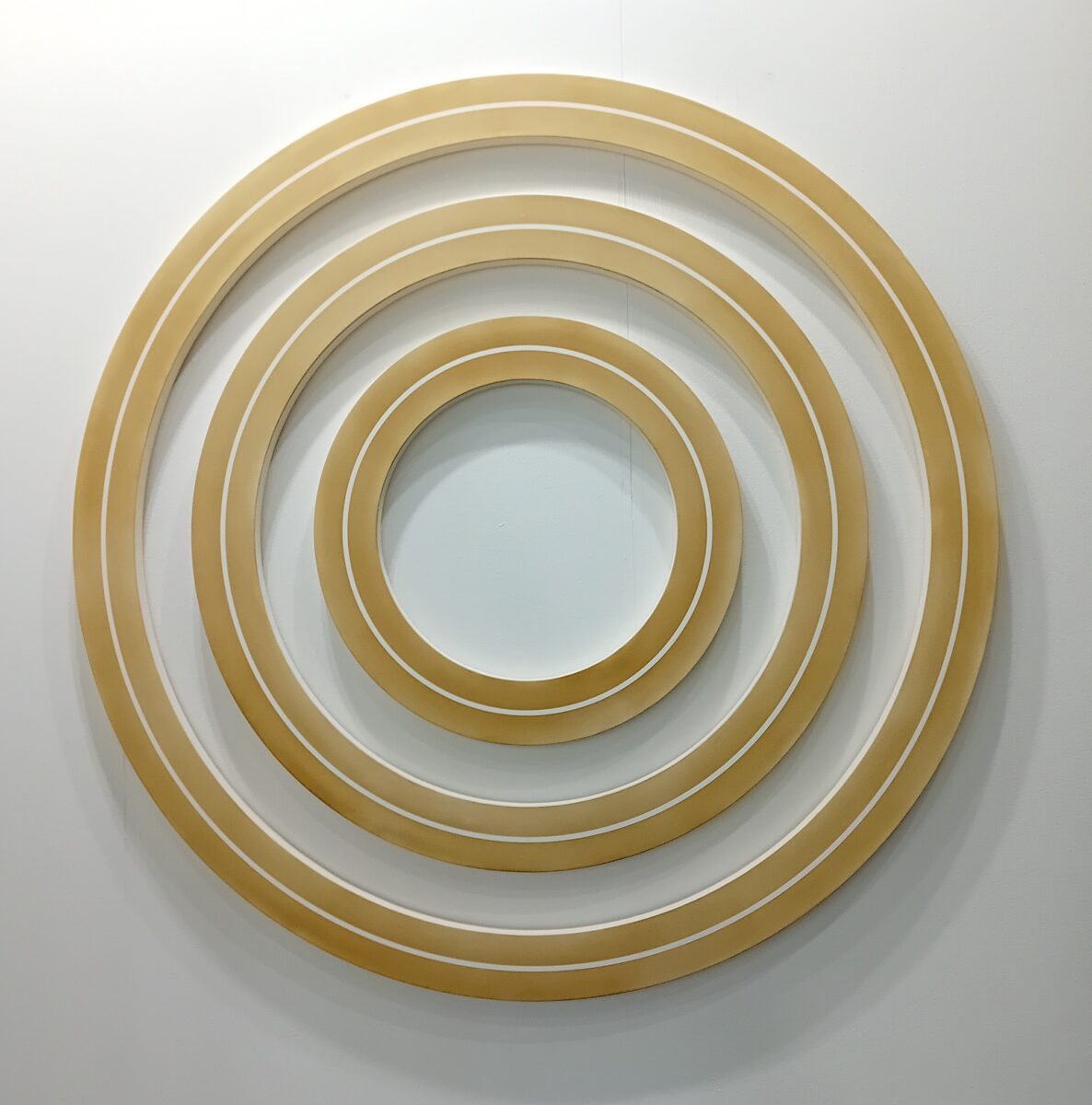
Philippe Decrauzat: ‘Coffee Rings’, 2023, at A Arte Invernizzi, Milan
Swiss artist Philippe Decrauzat reflects – often playfully – on the tropes of constructivism, kinetic art and minimalism, and talks of his interest in how his geometric paintings and installations influence the minds of their viewers. This example doesn’t use paint: it is stained by coffee, making them literal coffee rings as well as suggesting the marks left by imprinted spillage from a range of cups escalating to a diameter of 1.75 m. The thought it put in my mind was: is it time for a coffee break? I’d arranged that with Iavor, so I gave him a ring… I suppose it was a coffee ring.
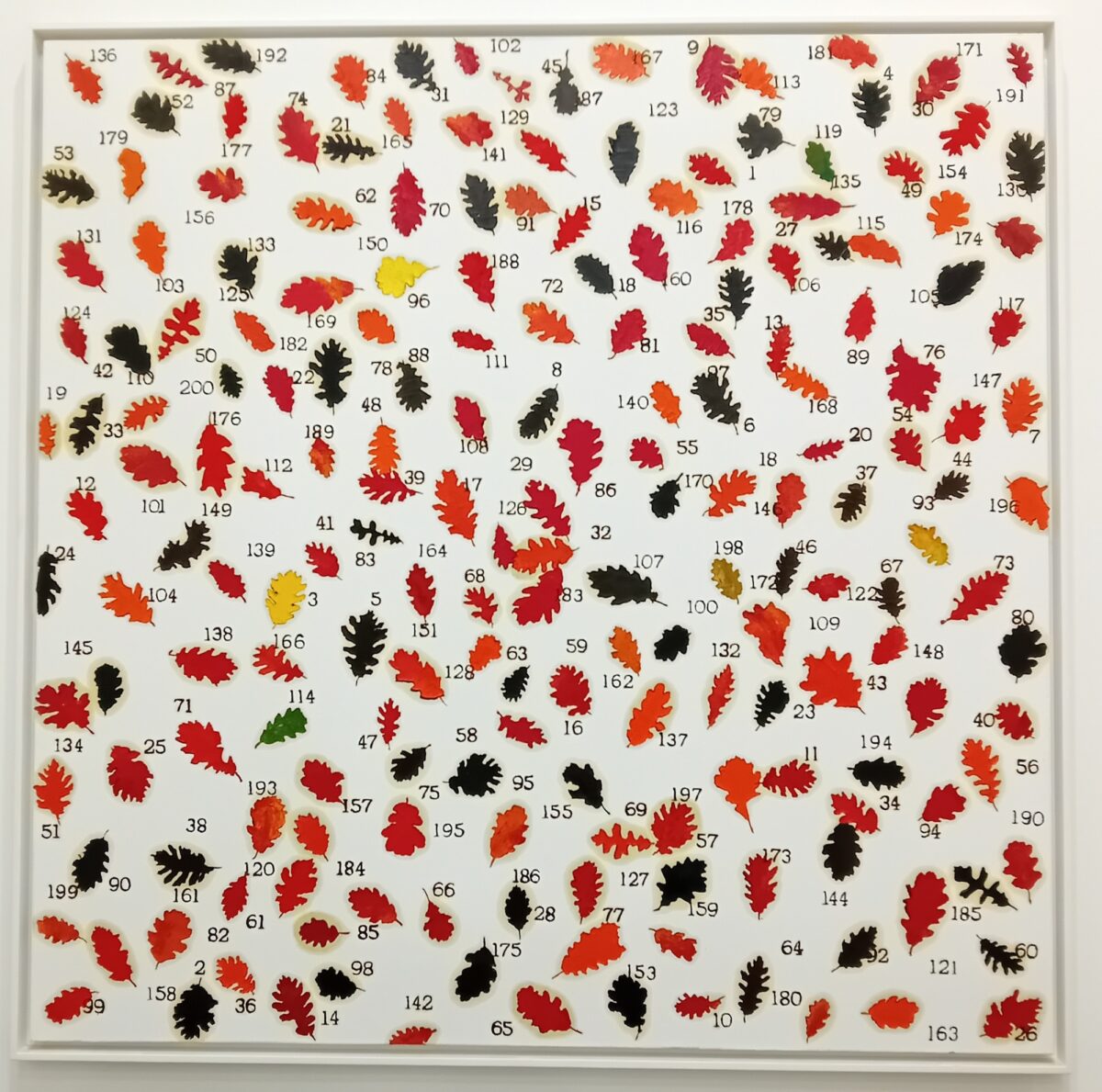
Giuseppe Gallo: ‘Untitled’, 2004, at Galleria Umberto Benappi, Turin
One strand of Rome-based Giuseppe Gallo’s practise over the past thirty years sees him lay out his numbered archive of templates traced from oak leaves. These are transferred to the canvas using oil and encaustic, with each leaf retaining its identifying number. The results operate attractively as all-over abstractions, as well as investigating the range of shapes emerging from natural growth. That aspect is underlined by the numbers following the Fibonacci sequence – though their placement is as random as if the wind had blown them into their precisely delineated and separated places. Thus 1, 2, 3, 5, 8, 13 etc. will be present, but hunting them down is not such a speedy game. Gallo also draws parallels between leaves and people, with how much variation is possible without loss of fundamental identity. And the same can now be said of the many paintings he has made in the series.
Shirin Neshat: ‘Untitled’ (from Women of Allah), 1995 at Repetto Gallery, Lugano
The US-based Iranian artist’s iconic ‘Women of Allah’ (1993-97) is fully included in her substantial retrospective at the Padiglione d’Arte Contemporanea. That series was made following Neshat’s first trip home after a sixteen year absence from Iran. PAC has the big black and white prints portraying women (often the artist herself) with extracts from Iranian women writers transcribed over the only parts of the body not covered by the chador – so breaking the silence of both the women and the photographs. Weapons are often included, emphasising the coexistence of devotion and sacrifice with hate and violence, as well as implying resistance. Here, though, is one of those images in colour, without inscription (that would have added 25% to the price, I was told), and with Neshat armed only with a tulip. Yet not without its power.
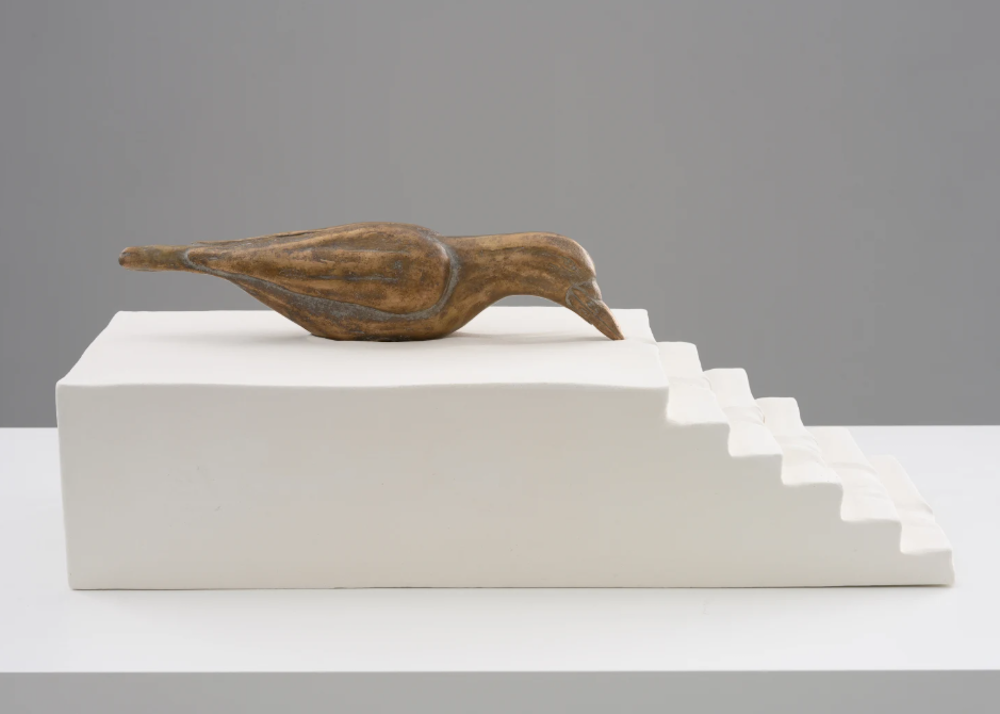
Grace Schwindt: ‘Gravity’ 2019 at Galerie Peter Kilchmann, Zurich / Paris
I like a surprise that opens out into a puzzle… The original feature of the German artist’s sculpture is how the bronze bird interacts with the elegant ceramic architecture / plinth. It seems as if the force of gravity has been such that the bird has been pulled down, forming a depression. Yet that seems to have been such a gentle process, I suspected the declivity was already present. In which case: is the gravity emotional rather than physical? The gallery, which had the most informative labels in the fair, takes another tack: inviting viewers ‘to contemplate how seemingly delicate elements can exert a powerful influence, symbolising resilience in the face of vulnerability’.
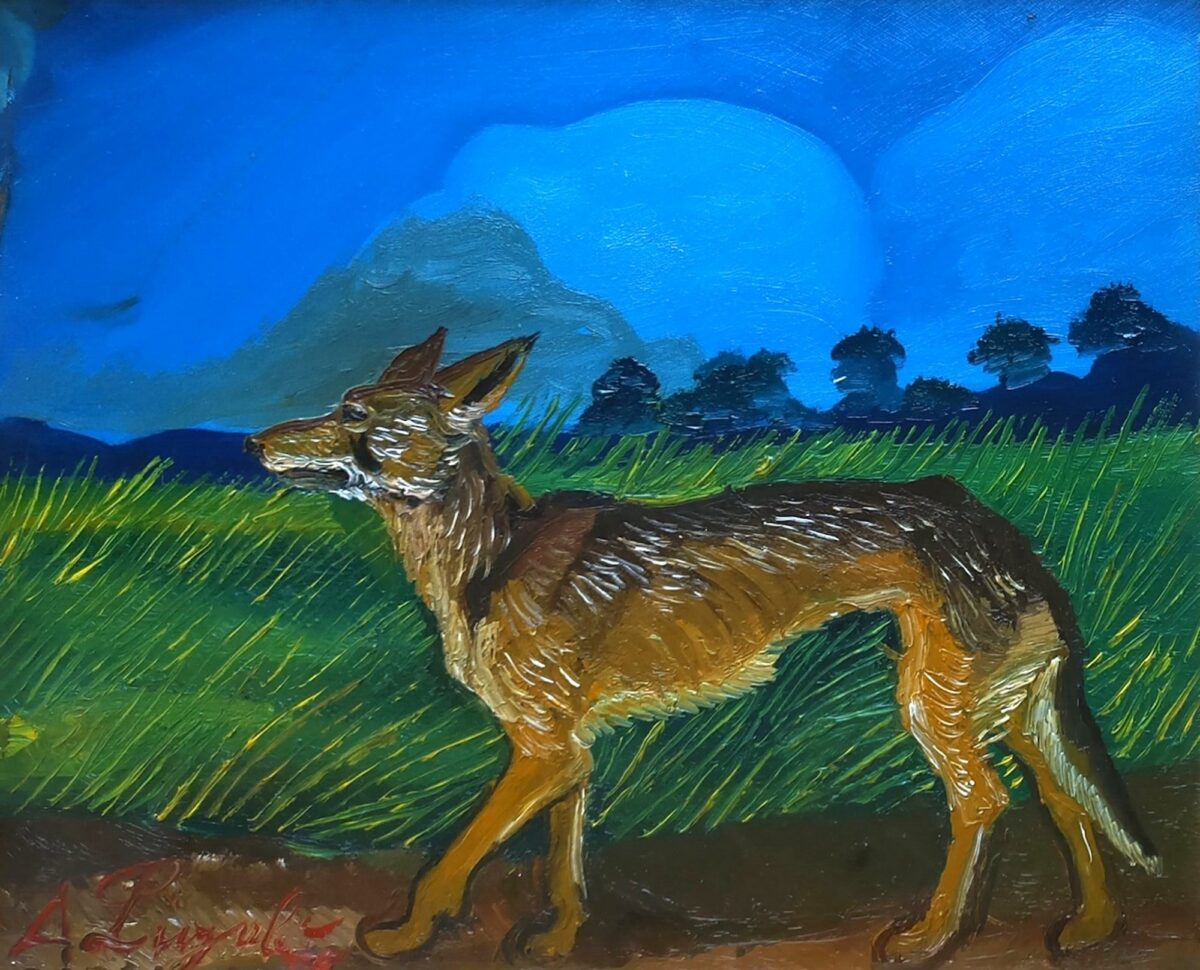
Antonio Ligabue: ‘Jackal with landscape, 1956, at Galleria de’ Bonis, Reggio Emilia
This jackal has a presence that drew me into an enquiry, on which the gallerist seemed rather shocked that I was unaware of the self-taught Zurich-born artist Italian Antonio Ligabue (1899-1965). It turns out that he even has a dedicated museum in Gualtieri. A problematic family and a difficult early life as an itinerant farm labour with spells in psychiatric institutions preceded his concentration on painting from the 1930’s, leading on to a very productive period in the 50’s. Animals were his speciality, created from memory after – apparently – psyching himself up in front of the blank canvas by making the calls of his intended subject. That may explain the presence…
Christian Jankowski: ‘New Paintings – Picasso XLVII’, 2025 Galleria Enrico Astuni, Bologna
German artist Christian Jankowski likes to work collaboratively, introducing exchanges between the art world and other fields. Since 2015, he has developed an archive of found digital photographs of people enacting famous paintings using poses, costumes, props, scenery, body paint and makeup. He sends those performative photographs to the painting replicators in Dafen, China, who turn the them back into paintings with the exact dimensions of the original – typically with a stripe of blank canvas remaining to indicate that the found image did not follow the exact proportions used by the artist. The results, given their distance from Picasso, might well be described as ‘Chinese whispers’.
* Taking place from April 4-6, with the VIP preview held on April 3 at Allianz MiCo, miart is the international modern and contemporary art fair organised by Fiera Milano. Directed by Nicola Ricciardi. It has shaped its identity and programme around the concept of friendship, understood as equal, mutual, lasting, and genuinely supportive connection. This approach is further reinforced by the title, among friends, borrowed from the last retrospective dedicated to Robert Rauschenberg, the artist to whom the fair pays tribute on the centenary of his birth.
Categories
Tags
- A Arte Invernizzi
- Antonio Ligabue
- ben brown fine art
- Ben Brown Fine Arts
- Christian Jankowski
- CIBRIÁN
- Galerie Peter Kilchmann
- Galleria de’ Bonis
- Galleria Enrico Astuni
- Galleria Frediano Farsetti
- Galleria Umberto Benappi
- Giorgio de Chirico
- Giuseppe Gallo
- Grace Schwindt
- Massimo Vitali
- Mazzoleni
- miart
- miart 2025
- Philippe Decrauzat
- Repetto Gallery
- Richard Serra and Shirin Neshat
- Shirin Neshat
- Siyi Li
- Yoan Capote
